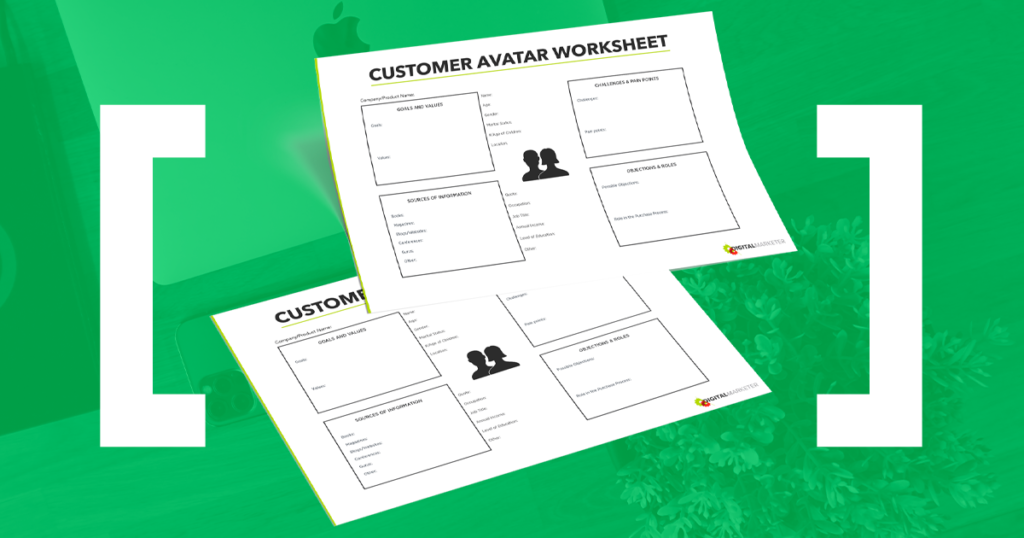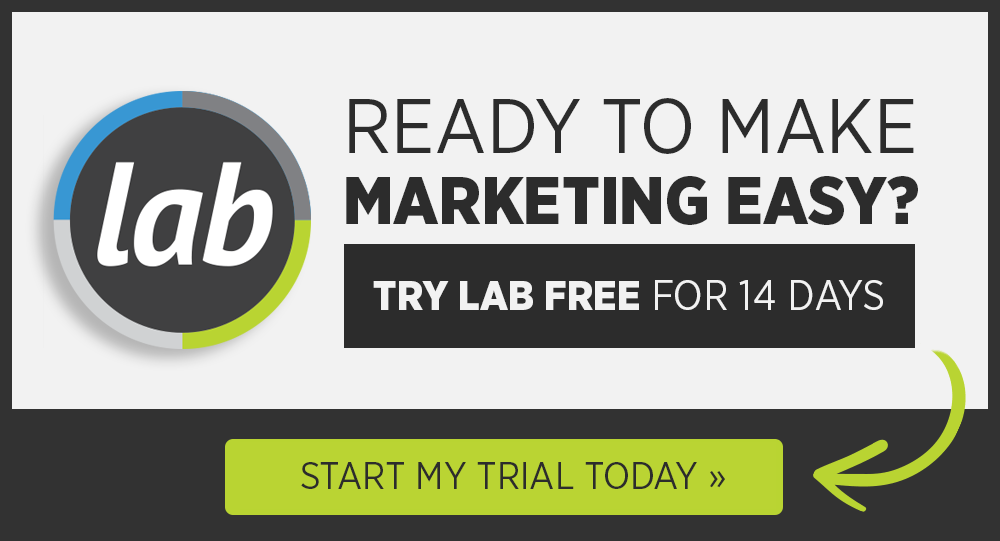If you know marketing, then you know: it is absolutely crucial that you are hitting your target audience right in the bullseye, every time. And if you don’t know marketing we are so glad you are here to learn!
In this article, we are going to teach you how to do a quick “check-up” on your current target audience to make sure your advertising is being pointed in the right direction!
Skeptical about the need to reassess your target audience? Maybe you have more followers on Facebook than all of your competitors combined! Pretty impressive, right?
Well, maybe. A high follower count can play into a common misconception that Alexandrea Harrelson, CEO of Harrelson Media, dubbed “the follower fallacy” which is the idea that the number of followers you have determines your influence. In reality, it is more important to have a high engagement rate than a high follower count. For example: if you have 100,000 followers with a 10% engagement rate, you are essentially reaching fewer customers than if you had 50,000 followers and a 50% engagement rate. The moral of this paragraph is to keep reading and keep an open mind!
So here is the check-up. There are 3 checkpoints—each one represents a key component of a perfect target audience. This is a great chance for a self-evaluation and to potentially catch any issues with your current advertising direction.
Anytime you just aren’t seeing the conversions you want or you are worried that your audience isn’t cutting it, just run through this target audience check-up, and get yourself back on track.
Checkpoint 1: Are You Making Followers or Friends?

Obviously, most people trust their friends more than they trust advertisers. And let’s be honest, that’s smart of them. But what does it mean for us, as the marketers who are trying to initiate symbiotic relationships between our customers and our businesses? It can encourage a healthy identity crisis.
In checkpoint 1, you want to make sure you aren’t falling prey to the follower fallacy. Remember that calculation we did at the beginning? Let’s use simple numbers this time.
You have 10 followers on Instagram, but your posts average around 3 likes and 1 conversion. That means you have 7 followers who do nothing but inflate your ego. Ideally, you want all your followers engaging with your content and getting excited about your product, but in this scenario, you would be best off buckling down and making sure those 3 fans who liked the post know you see them and you’re grateful for them! This creates brand loyalty and what we like to call friendship. This lets you better cater to who really cares about your business, instead of chasing down dead leads. It also gives you greater bandwidth to figure out what you are doing right and do it!
So it is your job to transform your followers into friends. Followers might drop a like or a comment, but friends will also be loyal and maybe even introduce you to their friends… who may turn into more friends… who will introduce you to their friends… it’s a beautiful cycle.
Properly focused target audiences will make your followers/friends feel seen and promote that symbiotic relationship we were talking about earlier. You’re prioritizing them and giving them a great product, while they are coming back, again and again, to re-buy or bring in new customers.
If this “friendship” idea feels foreign to you, we encourage you to step back and think about why your followers aren’t friends. Likely, the root of the problem lies in your target audience. Maybe it has become stagnant and you have simply outgrown it. Or maybe you are focusing on the wrong groups of people—some demographics are over-sold to or are just plain wrong for your business.
If you haven’t already, challenge yourself to turn half, or even a quarter of your followers into friends by the end of the year. We promise the results will amaze you.
Checkpoint 2: How well do you know your buyer [persona]?
And if you are really trying to make more “friends,” you’ll want to know something about them. This is how you can start calibrating your perfect target audiences.
What is your ideal customer doing this weekend? How will your product help them do it better? These are the kind of questions that help us get in our customers’ heads and figure out how to make their experience with our company even better. You can compile the answers to these questions in a customer avatar worksheet, which is your fictional “ideal” customer. This profile helps you define and back up your target audience.

Your buyer persona (or customer avatar) should be more than a quick sketch of some demographics and how much money they spend on your site. When, if ever, is your ideal customer going to be interested in a new hobby? What are their plans for reacclimating as the pandemic is ending? Where do they spend most of their time online?
Some of these questions relate to marketing more obviously than others, but all of them should affect the way you are engaging with these customers. If your target audience is single, you need to think about how often your content is portraying couples. If they are still concerned about the virus, maybe try using masked-up models.
Making in-depth buyer persona profiles can be a great resource for your marketing team, especially if you struggle to present a united front, or have just lost sight of your customers’ complexity.
This reflects back on Checkpoint 1. If your buyer is really your bestie, you’ll know exactly how to get them to “hang out” with your business. And after a while, they start thinking of you as a friend too.
Checkpoint 3: Are you aiming for the right number of targets?

A criticism of target audiences as a marketing strategy is that they promote exclusivity in your customer base. Forever focusing on a single demographic can neglect potential customers and ultimately inhibit business growth… it can also give your competitors an edge against you if they are equipped to include the customers you are leaving out in the cold. In light of this acute criticism, we encourage every brand to keep adding target audiences as they grow.
Note: if you are a small business just getting the hang of things, it may be more appropriate to hone in on one primary demographic. Just make sure you aren’t building yourself a box you can’t climb out of! Be careful not to explicitly exclude any demographic if you can help it; that could be a costly regret in the future.
So essentially, there are two extremes you may swing into: too many targets, or not enough. If you have bitten off more than you can chew, you need to take a close look at the numbers: which demographic is bringing you the most clients? which demographic is costing you the most to advertise to? which demographic hosts the least conversions for your business? Your analytics will likely make it pretty clear which targets you are hitting and which ones are a waste of darts (and money! and time!).
Or maybe you aren’t targeting enough demographics. A sure sign that this is the case is if your current market (the same one that has always worked! that you love!) is bottoming out and your returns are down. This is a cause for celebration! Your exhausted market probably means your marketing and product were so successful that they covered a whole demographic of people.
Buttttt it also points to a need for expansion. Here is the story of the NFL’s new target audience to help inspire you.
In 2010, the NFL launched its first-ever women-oriented apparel campaign. Fast forward to 2021 and there is a section of the website dedicated to women, which has proven extremely successful and lucrative. The NFL knew that expanding their clothing lines to include women’s styles was a good investment because they spent time collecting data: 41.9 million women tuned in for Super Bowl XLIV and more than 45 million women watched NFL games each weekend.
You can mimic the NFL’s success by observing your followers on social media or your website traffic. Who is showing up that you aren’t currently advertising to? These groups make ideal target audiences because you already have evidence that they are interested in your business.
Notice how this checkpoint came after “how well do you know your buyer.” If the first checkpoint made you realize you need more high-quality “friends”, you know you need to double down on honing your target audience. And once you give the second checkpoint a big green checkmark, it may be time to consider expansions.
Well… how are you feeling? We hope this article has instilled some confidence in your current target audience or at least given you a good direction to head in. But if it has raised some questions or left you wondering if you need a marketing MRI, DigitalMarketer has tons of options in our lab platform to help you with your targeting! Remember: make friends, get to know them, and invest your time in the groups you really love.
The post Your Annual Target Audience Check-Up appeared first on DigitalMarketer.
Did you miss our previous article...
https://consumernewsnetwork.com/technology-news/10-examples-of-brands-using-tiktok-stitch-and-tiktok-duet-for-marketing







